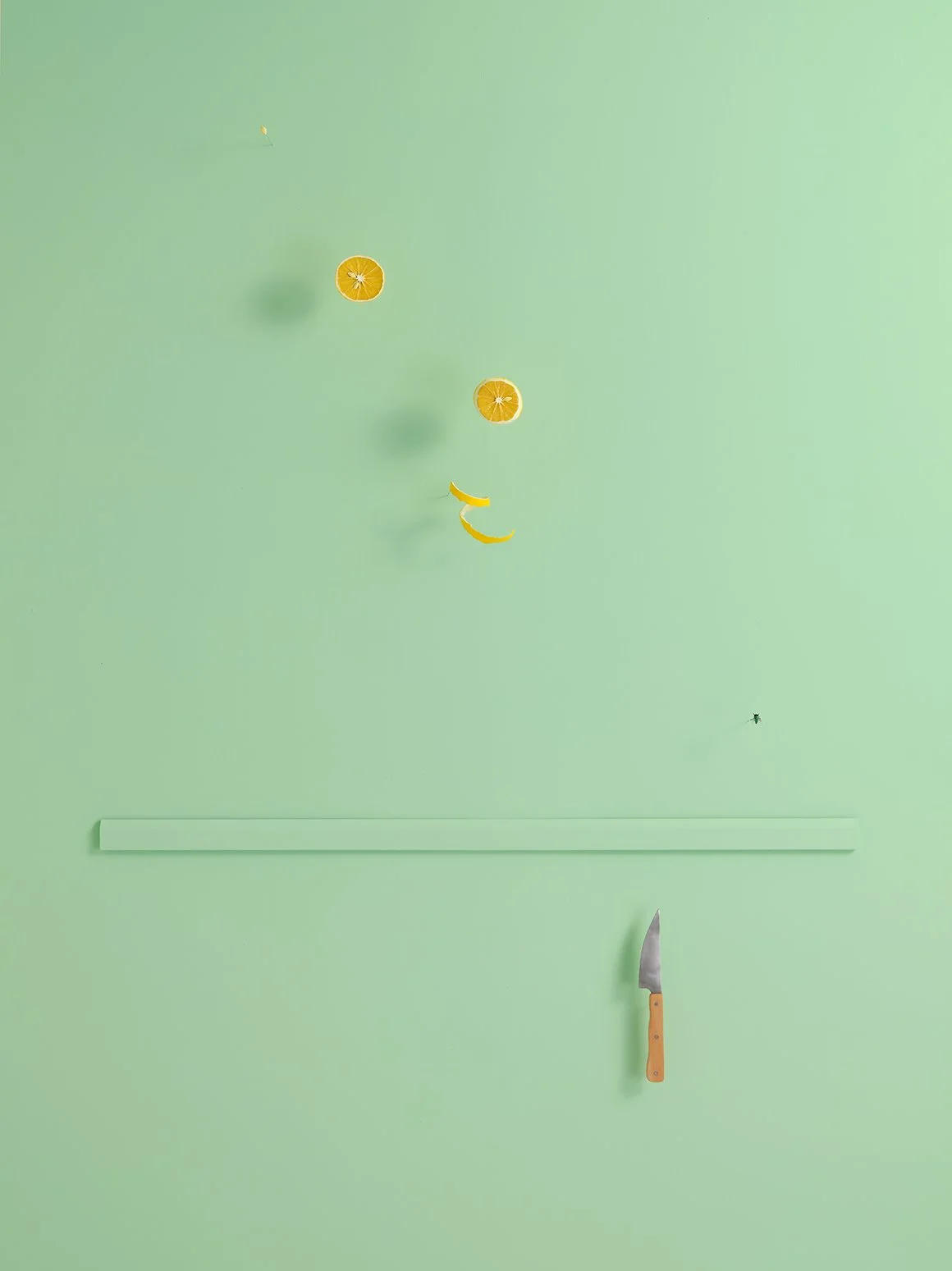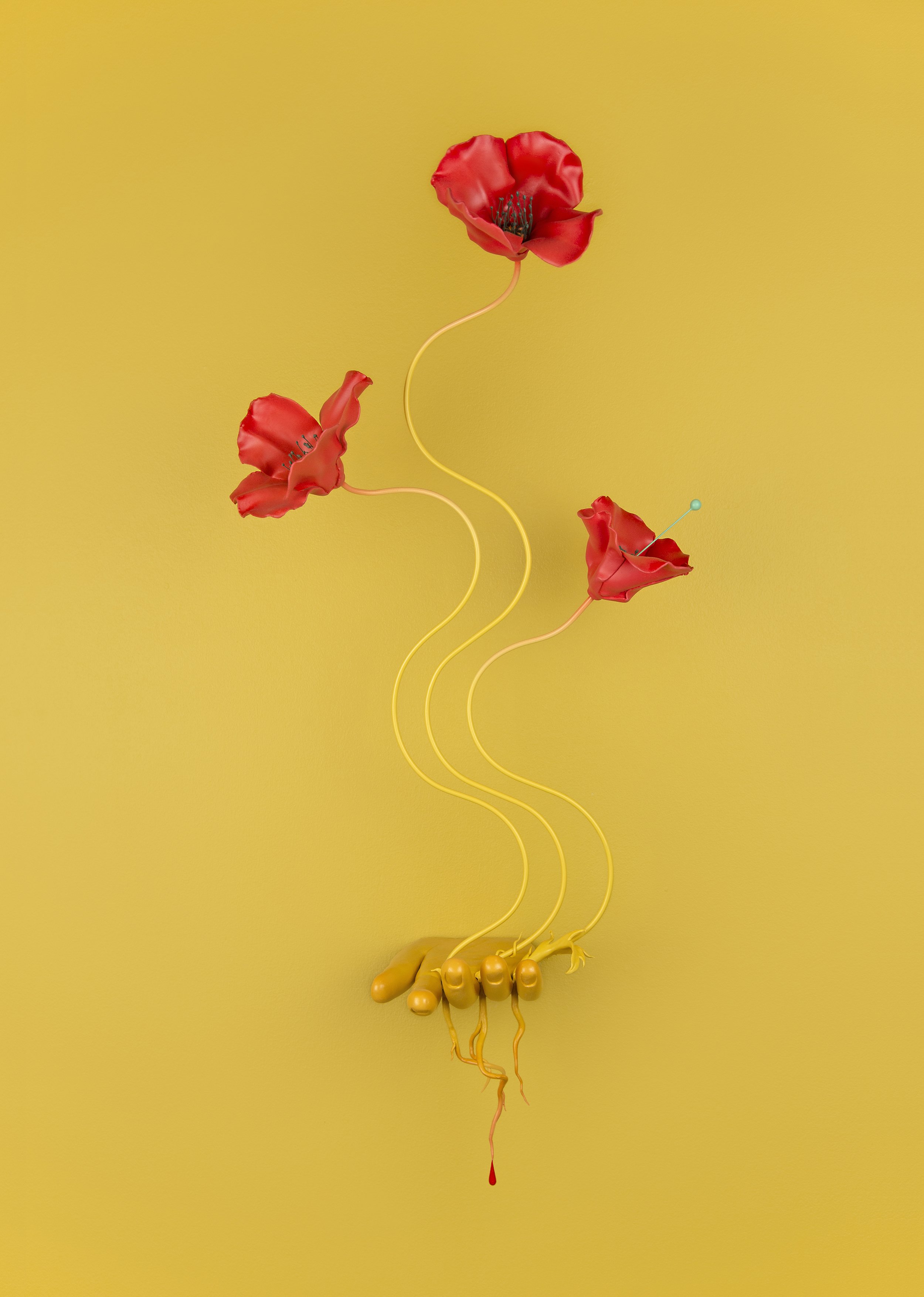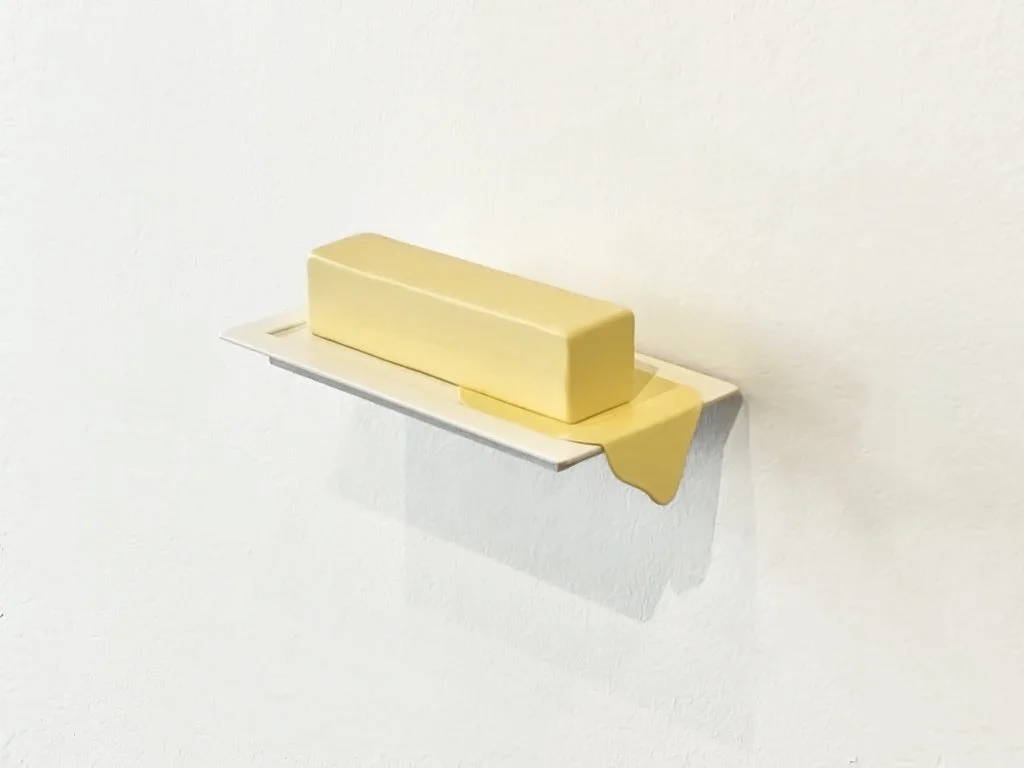Mother’s Mother’s Mother, 2019. Graphite, colored pencil and acrylic paint on mylar and pigmented paper. 24 x 32 inches.
Langdon Graves
BIO
Langdon Graves is a Virginia-born, New York City-based artist who holds a BFA from Virginia Commonwealth University in Painting and Printmaking and an MFA from Parsons School of Design. She is adjunct faculty at Parsons where she teaches for the First Year Program and HEOP; a Visiting Professor at Pratt Institute; and works with teen artists across NYC’s public schools through Studio in a School and the Department of Education. Langdon is represented by Dinner Gallery in New York City and has had solo exhibitions in New York, Florida, Virginia, Arkansas, Vermont and Massachusetts and has participated in group shows throughout the United States, Canada, Europe and Australia. Langdon has attended the Fountainhead Residency in Miami, the Kunstenaarsinitiatief Residency and Exhibition Program in the Netherlands, the Object Limited residency in Bisbee, Arizona and will attend STONELEAF Retreat in the summer of 2022. She is a recipient of Canson & Beautiful Decay’s Wet Paint Grant and has been featured in Art in America, VICE, Juxtapoz, Art F City, Blouin Artinfo, Hyperallergic and Madeline Schwartzman’s See Yourself X.
ARTIST STATEMENT
Over the last few years, I’ve been creating work around ghost stories my grandmother told when I was growing up that we revisited together before she died. I’ve always had a fascination with hauntings and spirit communication but going back into these stories at this stage in my life has allowed me to see them as metaphors for complicated relationships and generational trauma among members of my family. I’ve been thinking about the connection between trauma and belief and how they’re passed like heirlooms to the next generation.
For recent work, I’ve borrowed symbols from the Vanitas and memento mori traditions of painting and literature representing earthly pleasures, time and decay within a larger theme of inevitability of death. Burning candles, insects, flowers and food are regular players. The works’ compositions move in and out of logical arrangements, subject to the spatial confusion of memory and stretching of reality accompanying mourning and loss, as well as the passing of time.
Pith, 2019. Wood, foam, aluminum, polymer clay, brass, and acrylic pain. Variable dimensions.
Interview with Langdon Graves
Can you tell us a bit about your background and how you became interested in becoming an artist? Who or what were some of your most important early influences?
“Artist” was always my answer to “what do you want to be?” My grandfather was an illustrator and my best friend, so drawing and using my imagination were encouraged. I didn’t live with siblings and spent a lot of alone time making things - costumes, paper dolls, dioramas, “improving” the pictures in my storybooks. Book illustrations in general were hugely influential, like Chris Van Allsburg’s The Mysteries of Harris Burdick. I loved everything Jim Henson. I’ve always been drawn to art with a narrative that presents its own realm and logic, and fell in love with Surrealism pretty early on. I spent many weekends at the Corcoran, the National Gallery and the Hirshhorn, where I saw an Eva Hesse retrospective in 9th grade that gave me a whole different perspective on materials and conveying ideas.
What is a typical day like? If you don't have a typical day, what is an ideal day?
I live in Brooklyn with an apartment in Greenpoint and a studio in Bushwick. I walk the 1.8 miles between them most days and while I do not love the route through an industrial corridor/road-rage-row, walking gives me time to listen to an audiobook or music and see a little bit of the city and the sun.
I moved to New York in 2005 to attend grad school at Parsons, where I now teach. I’m lucky to be surrounded by a supportive and inspiring creative community, and to share a space with two artists and friends, Trish Tillman and Eric Lundquist. We have our own studios and share common space, which is a good mix of privacy and help-get-me-out-of-my-head. We’re on the fourth floor with high tin ceilings and a wall of windows so my studio is filled with light, and I always paint my floors white to move even more light around.
On the days I don’t teach, I use the first half of the day for school work or research and writing, and spend afternoons and evenings in the studio. I like working at night when it’s quiet, but starting when the room is still warm with sunlight is so nice. If Trish and Eric are around, we’ll catch up for a bit and then I’ll work through dinner, sometimes past midnight. There are never enough hours in the day for me and I’m not a good sleeper - my mind is always going.
Mother Nyx, 2021. Polymer clay, brass, acrylic paint. 22 x 18 x 8 inches.
What gets you in a creative mindset?
Creating! Making leads to more making and uninterrupted time in the studio sustains creativity, for me. But I typically do a lot of research before I begin working on new things and discovering common threads, especially connecting new subject matter to past work, is really inspiring. I also listen to a lot of music and audiobooks, but sometimes I can’t do words while I’m in the studio because they distract me from the stories I’m building in my head.
Can you walk us through your overall process? How long has this approach been a part of your practice?
I work with two main processes, drawing and sculpture, each of which I approach very differently. The drawings have more of a formula and while I’m always trying new materials, some have been constant for almost twenty years. I draw with graphite pencils and loose powder on frosted mylar, on the reverse side of which I apply color with pastels, colored pencil and acrylic paint. It’s a bit like a hand-drawn animation cel. A few years ago I started layering the drawings over pigmented and hand-painted paper, which opened up opportunities for more nuanced color and depth among the layers. I work with my framer to match the frames to the ground color, extending it to make the drawings more object-like.
I’m persnickety about my drawing materials in order to get fine details. I use a variety of mechanical pencils ranging from 0.3 to 0.9mm and 6H to 9B and apply loose graphite powder with brushes, which is also how the pastel is applied. I’m always trying different erasers, some of which are sliced into small wedges that I grip with tweezers. Right now I’m into Tombow’s mono erasers because they don’t create much dust and I especially like the Zero, which has a 2mm pen-like tip. I can get super clean edges and higher contrast with the right erasers on the mylar.
My sculptural process ends up tight towards the end, but starts off messier and with less control, which is fun. I can listen to louder music and have conversations while I work three-dimensionally, which I can’t do when I’m drawing. I use wood, epoxy and polymer clays, paper, metal, fabric and whatever materials will create the forms and effects I’m envisioning. Lately I’ve been working a lot with polymer clay and an airbrush, which has gotten me away from using spray paint. As my body’s tolerance for chemicals and solvents has decreased, I’ve had to adjust my process to work with as few as possible.
Can you talk about some of the ongoing interests, imagery, and concepts that have informed your process and body of work over time? How do you anticipate your work progressing in the future?
Belief is always a central theme and exploration in my work, which takes me down interesting paths. Several years ago I began revisiting stories of ghost encounters my grandmother used to tell me when I was young. My request to hear them again was at first a way to get her talking about her life after suffering a heart attack and some short-term memory loss. But soon we were making regular phone calls, sometimes with my mom and aunt who each brought accounts of their own inexplicable experiences. When stories would get retold, I often noticed small changes from the last time I heard them; details shifted with the storyteller’s memory. Whether or not I believed the stories’ claims, I felt the significance of hearing the women in my family talk about their lives and share moments from a time before I born. It was enough to believe in their belief, and I started to see the ghosts and hauntings they spoke about as metaphors for complicated relationships and generational trauma.
I started reading a lot of books about ghosts, particularly as they relate to trauma. I stumbled across early Spiritualism and séances in a search for practices of spirit communication, which opened some doors into moments of American history I didn’t know much, particularly women’s history in the mid 19th century. I also turned to skeptics and scientists who debunk paranormal phenomena and got into some strange pseudo-scientific territory within quantum entanglement, and discovered the Society for Psychical Research (of which I’m now a member). While learning about the Victorian era’s preoccupation with death, I became interested in measures taken to safeguard against premature burial and the bizarre medical and funerary practices developed to test for whether a presumed deceased person might still be alive. The lengths I was learning that people would go to challenge death and search for life where there likely was none, struck me as attempts to channel grief and longing and to cope with loss. My grandmother’s stories were rich with imagery that I’d been picturing since I was a child, from which I began to pull symbols and motifs that I could mix with what I was learning from my research. The work I started then and continue to make consists of a personal layer with constant features, and a broader layer that I keep adding to.
Romance in Reverse, 2019. Graphite, pastel, colored pencil, and acrylic paint on mylar and pigmented paper. 24 x 32 inches.
Do you pursue any collaborations, projects, or careers in addition to your studio practice? If so, can you tell us more about those projects, and are there connections between your studio practice and these endeavors?
I teach art and I love it. In addition to Parsons, I teach in the graduate Fine Arts program at Pratt Institute and I also work with Studio in a School, Lincoln Center and the Department of Education. I think it’s important to keep the community wheel turning and I want to share as much as I take. Teaching feels as integral as artmaking to my life as an artist in this city.
As a result of the pandemic, many artists have experienced limited access to their studios or loss of exhibitions, income, or other opportunities. Has your way of working (or not working) shifted significantly during this time? Are there unexpected insights or particular challenges you’ve experienced?
During lockdown, I left the city for a couple months to stay with my partner’s parents. I grabbed my printmaking supplies thinking I could work on my Home Circle series, a hand-printed oracle deck I started in 2018. I’d given readings from the deck at art fairs and to friends and got the idea to offer virtual readings when the feelings of disconnection and isolation started to set in. Like a lot of my work, the symbols in the deck come from my family’s stories so while the cards function like a regular oracle deck, reading them also tends to prompt a kind of reciprocal story-sharing about family. When I started the virtual readings over Zoom, I had no idea how special it would feel to connect that way with people I wasn't able to see in person. I found myself giving readings to good friends as well as people I’d never met; to a far-away friend in Kyoto; and selling decks to people who could see and hold their cards while I spoke about them from thousands of miles away. The experience made me appreciate how different this project is from the rest of my work owing to its potential for interaction and I decided to make it a forever project. I’ve added three new cards over the last year and will add at least one new one each year.
Can you share some of your recent influences? Are there specific works—from visual art, literature, film, or music—that are important to you?
I read a lot and last year I got into Clarissa Pinkola Estés library, starting with Women Who Run With The Wolves and on to Mother Night, The Dangerous Old Woman and her Theater of the Imagination lecture series. I receive her writing as a blend of ancient folklore, philosophy, psychological and sociological observations and spiritual wisdom. She talks about story as medicine and the role of storyteller as healer: “Tales are, in their oldest sense, a healing art. Some are called to this healing art, and the best, to my lights, are those who have lain with the story and found all its matching parts inside themselves and at depth.… I encourage people to do their own mining of story, for the scraped knuckles, the sleeping on cold ground, the groping in the dark and the adventures on the way are worth everything. There must be a little spilled blood on every story if it is to carry the medicine.”
Zener I (open circle), 2021. Graphite, pastel and colored pencil on mylar and pigmented paper. 24 x 32 inches.
Who are some contemporary artists you’re excited about? What are the best exhibitions you’ve seen in recent memory and why do they stand out?
I just saw Robert Gober's show, "Shut Up. No. You Shut Up.” at Matthew Marks this past week and was reminded of what a poet he is, and a craftsperson’s craftsperson. Few artists capture the full range of my artistic interests like his work does, and the sum is even greater than the parts. So full of mystery and empathy and mundanity and wonder. I also loved Christine Rebuhn’s show The Breeze Will Kill Me at Thierry Goldberg this past fall. She’s another poet. Or maybe a songwriter, if visual art can be songs. When art really hits me, the feelings are more akin to what I get from literature and music. More: Matthew Ronay, Claudia Martinez Garay, Devra Fox’s drawings, María Medem, and so many others. I also really love what sTo Len is doing right now in his residency with the NYC Department of Sanitation.
Do you have any tips or advice that someone has shared with you that you have found particularly helpful?
The best advice I got when finishing grad school was to apply to residencies. For me, they’ve been opportunities to travel and get out of a routine, to meet new people and grow as an artist in ways that my work starts to reflect, whether or not I’m aware of it at the time. I think residencies have long been a challenge for artists who are parents (especially mothers), but many are making program changes to accommodate families.
What are you working on in the studio right now? What’s coming up next for you?
I’m launching another limited edition of the Home Circle decks soon with Uprise Art and working towards my next solo with Dinner Gallery, and I’m super excited to head to STONELEAF Retreat in June!
First Fig, 2021. Wood foam, wood, paper, and acrylic paint. 6.5 x 4 x `1.5 inches.






